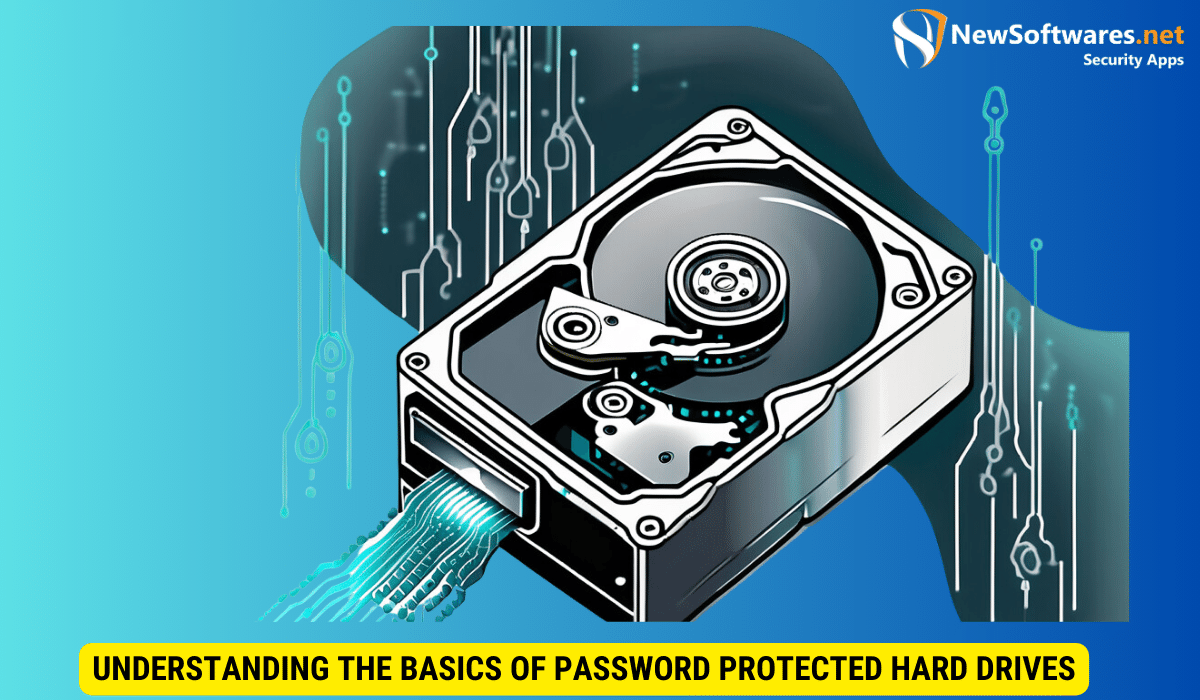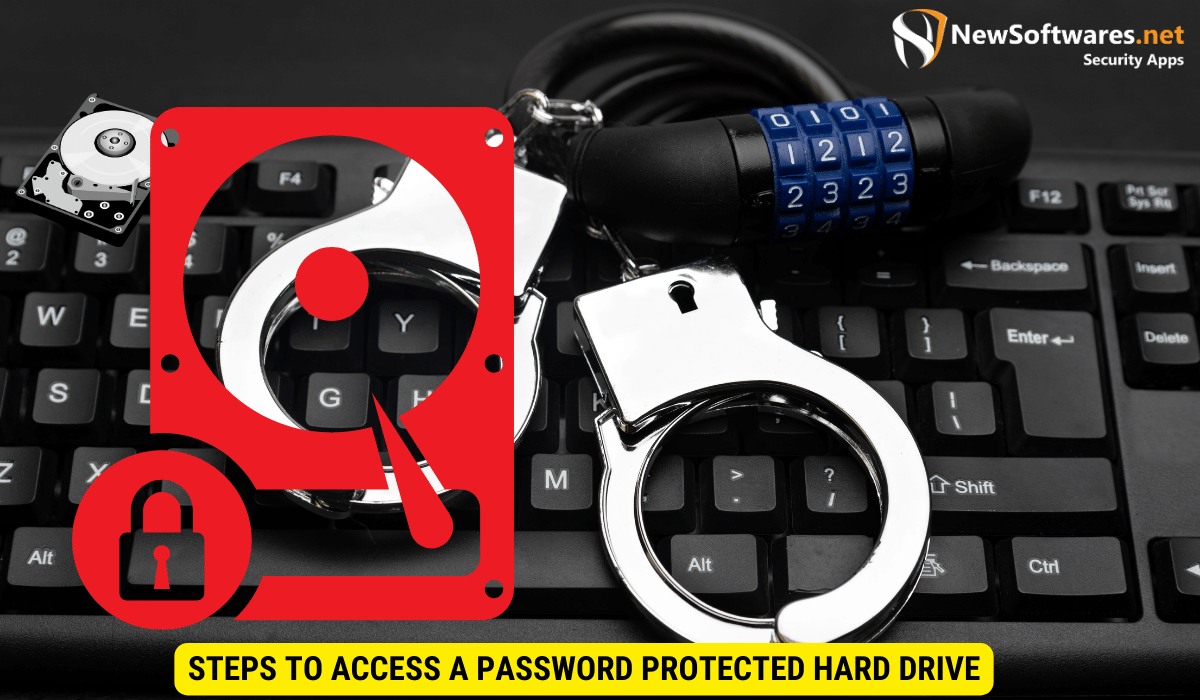Accessing password-protected hard drives involves understanding the basics of password protection, legal and ethical considerations, utilizing software and hardware tools, following a systematic approach, and troubleshooting common issues to ensure successful access while respecting privacy rights and minimizing risks.
Passwords are a crucial component of data security, especially when it comes to protecting hard drives. But what happens when you find yourself locked out of a password protected drive? I will unravel the mysteries of accessing password protected hard drives and provide you with a comprehensive guide to make it as simple as possible. From understanding the basics to legal implications and troubleshooting common issues, I’ve got you covered.
Understanding the Basics of Password Protected Hard Drives

In order to crack the code and access a password protected hard drive, it’s important to have a solid understanding of the basics. Passwords play a crucial role in data security, acting as the first line of defense against unauthorized access. When you protect a hard drive with a password, it encrypts the data stored on it and prevents anyone without the password from gaining access.
But how does password protection actually work on hard drives? Let’s take a closer look.
The Role of Passwords in Data Security
Passwords are like the gatekeepers of your data. They ensure that only authorized individuals can access the information stored on a hard drive. A strong password acts as a barrier, making it difficult for hackers or unauthorized users to crack the code and gain entry to your sensitive data.
How Password Protection Works on Hard Drives
When you set a password to protect your hard drive, the system uses encryption algorithms to transform the data into an unreadable form. Only with the correct password can the data be decrypted and accessed. This adds an extra layer of security to protect your files and prevent unauthorized access.
Now that we have a grasp on the basics, let’s delve into the legal and ethical implications of accessing password protected drives.
The Legal and Ethical Implications of Accessing Protected Drives
It’s important to understand the legalities surrounding accessing password protected hard drives to ensure you don’t run into any legal troubles. Let’s explore when it is legal to access a protected drive and discuss the ethical considerations involved.
When is it Legal to Access a Protected Drive?
The legality of accessing a password protected hard drive largely depends on the jurisdiction and the circumstances surrounding the situation. In some cases, you may have legal authorization to access a protected drive, such as during a criminal investigation or with proper legal documentation. However, it is crucial to consult with legal professionals to ensure you are acting within the boundaries of the law.
Ethical Considerations in Data Access
While legal authorization may allow you to access a password protected hard drive, it’s essential to consider the ethical implications. Respecting individuals’ privacy and data protection rights is crucial, and accessing someone’s data without proper consent or justification can lead to serious ethical concerns. Always evaluate the intentions and implications before proceeding with data access.
Now let’s explore the tools and techniques you can use to access a password protected hard drive.
Tools and Techniques for Accessing Protected Drives
When faced with a password protected hard drive, you have several options available to crack the code and gain access. Let’s explore some of the software and hardware solutions you can utilize.
Software Solutions for Password Recovery
There are various software tools available that can assist in recovering or bypassing passwords on protected drives. These tools utilize advanced algorithms and techniques to decrypt the data and provide access to the hard drive. However, it’s important to note that using such tools may have legal restrictions depending on your location and the ownership of the drive.
Hardware Methods for Bypassing Passwords
In addition to software solutions, there are hardware methods that can be employed to bypass password protection on hard drives. These methods often involve physical manipulation of the drive or utilizing specialized hardware devices to override the password protection. However, it is essential to exercise caution and, if required, seek expert advice to avoid potential data loss or damage to the drive.
Now that we have explored the tools and techniques at your disposal, let’s dive into the step-by-step process of accessing a password protected hard drive.
Steps to Access a Password Protected Hard Drive

Cracking the code and gaining access to a password protected hard drive requires a systematic approach. Follow these steps to ensure you navigate the process smoothly and successfully access the desired data.
Preparing Your System for Access
Before attempting to access a password protected hard drive, it’s essential to ensure that your system is adequately prepared. This includes having the necessary hardware or software tools ready, making backups of important data, and understanding the potential risks associated with the process.
Following the Correct Procedure for Access
Each password protected hard drive may have its unique procedure for access. Follow the manufacturer’s instructions or consult expert resources to understand the correct steps to access the drive. This may involve utilizing the appropriate software or hardware solutions mentioned earlier and inputting the necessary credentials to gain entry.
While following the correct procedure will increase your chances of success, it’s important to keep in mind that there is still a degree of uncertainty involved in cracking password protection. Now let’s address some common issues you may encounter during the process.
Troubleshooting Common Issues
Accessing password protected hard drives is not always a smooth sailing process. Various factors can lead to complications or barriers in gaining access. Let’s explore some common issues that you may encounter and how to troubleshoot them.
Dealing with Encryption
Encryption adds a layer of complexity to accessing password protected hard drives. If the data on the drive is encrypted, you may need additional tools or knowledge to decrypt it successfully. Consider consulting encryption experts or utilizing specialized software tools to overcome this challenge.
What to Do When Standard Methods Fail
Despite your best efforts, there may be instances when standard methods fail to crack the password protection. In such cases, it is crucial to consult professionals or experts in the field who possess advanced knowledge and techniques. They may be able to provide alternative solutions or methods to gain access to the drive.
Key Takeaways
- Understanding the role of passwords in data security is crucial in accessing password protected hard drives.
- Legal and ethical considerations surrounding access to protected drives must be carefully evaluated.
- Software and hardware solutions exist for bypassing password protection on hard drives, but legal restrictions may apply.
- Following a systematic approach and understanding the correct procedure will increase the chances of successful access.
- When troubleshooting common issues, consulting experts and exploring alternative methods can be beneficial.
FAQs
Q: Is it legal to access someone else’s password protected hard drive?
A: Accessing someone else’s password protected hard drive without proper authorization is generally illegal and can lead to severe legal consequences. It’s crucial to respect privacy rights and to act within the boundaries of the law.
Q: Can I use software tools to access a password protected hard drive I own?
A: Yes, you can use software tools to access your own password protected hard drive, provided you have legal ownership of the drive. However, it is important to be aware of any potential legal restrictions that may apply in your jurisdiction.
Q: Are there any risks associated with accessing password protected hard drives?
A: Yes, there are risks involved in accessing password protected hard drives. These risks include potential data loss or damage to the drive. It’s important to exercise caution, make backups of important data, and seek expert guidance if needed.
Q: Can I access a password protected hard drive if I forgot the password?
A: It is possible to access a password protected hard drive if you forgot the password, but it can be challenging. Utilizing software tools or consulting experts in password recovery may help in such situations.
Q: How can I ensure the security of my password protected hard drive?
A: To ensure the security of your password protected hard drive, it is important to use strong and unique passwords, regularly update your security measures, and keep your system up to date with the latest security patches. Additionally, consider implementing encryption to further enhance data protection.
Conclusion
In a world where data security is paramount, accessing password protected hard drives can be both a challenge and a necessity. By understanding the basics, evaluating legal and ethical implications, utilizing the right tools and techniques, following the correct procedure, and troubleshooting common issues, you can increase your chances of successfully accessing the desired data. Remember, each situation is unique, and it’s essential to exercise caution, respect privacy rights, and seek expert guidance when necessary.
